It was a beautiful day today in the bay area, so I headed up to Napa and the Pope Valley. Căutam un teritoriu nou pentru o molie mică de flori, Heliolonche celeris, care se pare că așteaptă să apară vreme frumoasă mai învecinată. Acest sezon a fost puțin întârziat din cauza frigului și a ploii, dar am speranțe într-o vizită reușită în câteva săptămâni. Cu toate acestea, Am dat peste o mână de microlepi frumoși. Toate aceste molii sunt în gen Adela si familia Adelidae (sau ar spune unii euncurvariidae). Ele sunt cunoscute în mod obișnuit ca “molii zâne” pentru că par să danseze peste petice de flori – ceea ce aparent zânelor le place să facă. Părea că bărbații apărău o zonă mică, cu două-trei o dată, învârtindu-se unul în jurul celuilalt la câţiva centimetri deasupra florilor. Presupun că aceste dansuri au fost teritoriale pentru că nu s-a observat împerechere. În timp ce femelele au antene lungi, masculii o duc in exces. Am adunat o serie drăguță, dar eu nu am depistat încă specia – cati vezi? din fericire, toate din Adelidae au fost acoperite într-o 1969 lucrare de Jerry Powell, care se întâmplă să locuiască și pe stradă față de mine.
După ce ați căutat prin colecții aici la CAS, și citirea monografiei, se pare că majoritatea dintre acestea sunt Adela trigrapha. Este un Adelid comun din zona Golfului San Francisco și din majoritatea zonelor de coastă din CA. Se observă că variația este considerabilă, cu benzi rupte și neîntrerupte precum și variație a roșului pe coroană. Celălalt Adelid este ușor de identificat Adela mă arde.
Adela trigrapha Zeller 1875
(mai multe imagini după pauză)
Adela trigrapha Zeller 1875
Adela mă arde Chambers 1876
Adela trigrapha Zeller 1875
Adela trigrapha Zeller 1875
Adela trigrapha Zeller 1875
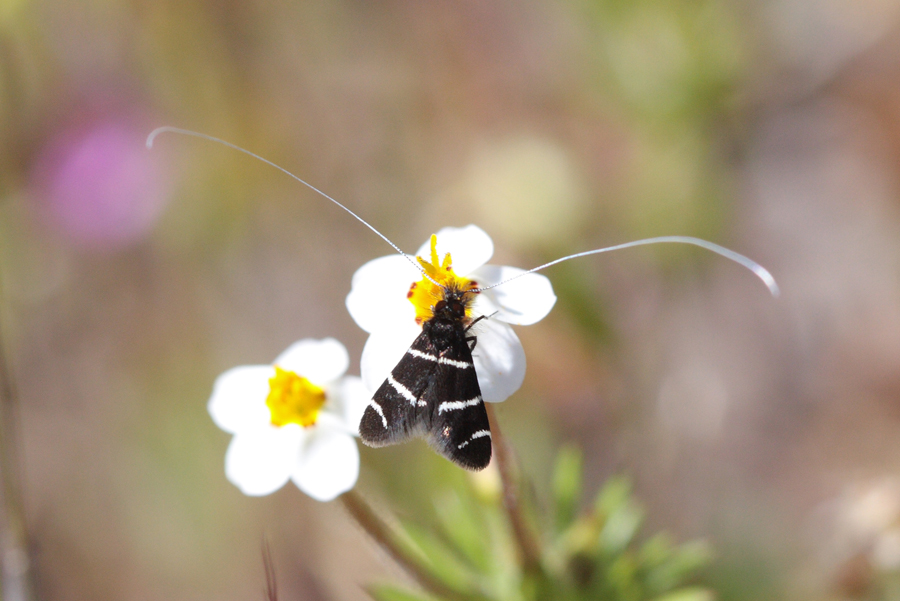
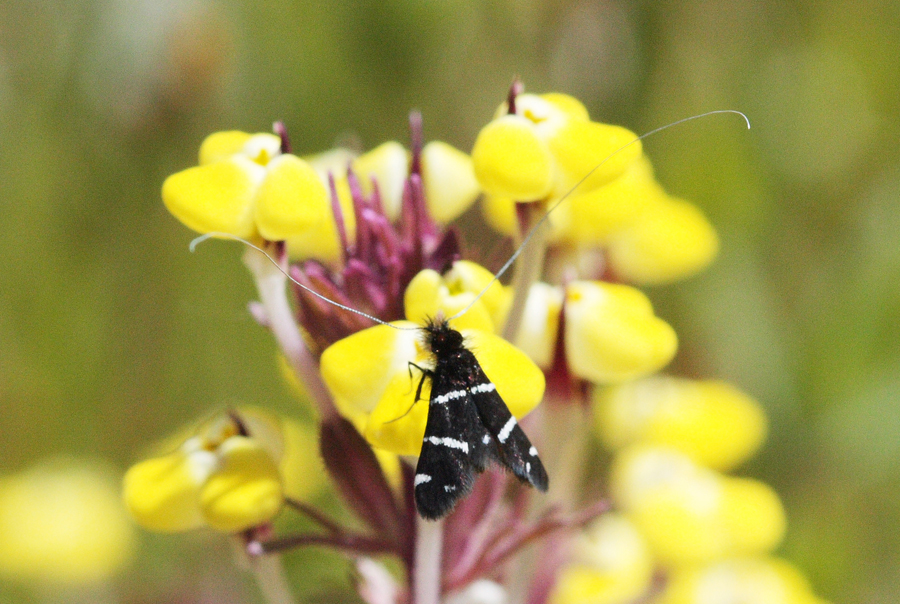
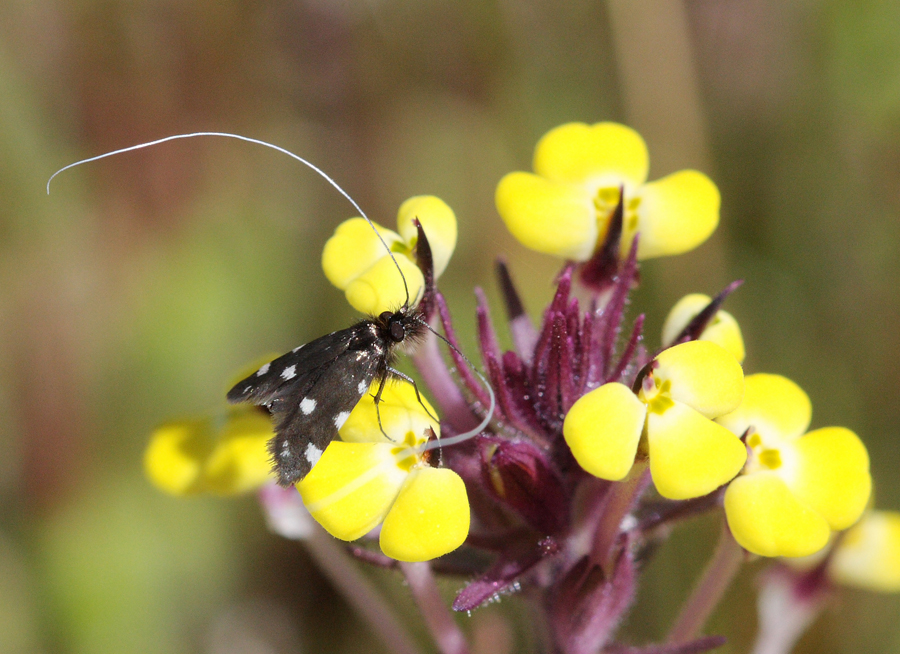
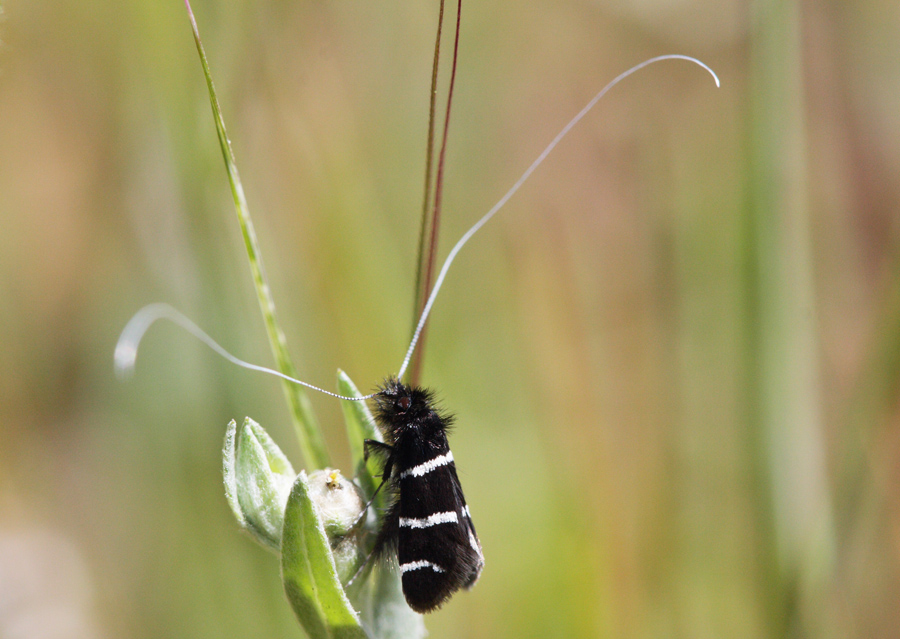
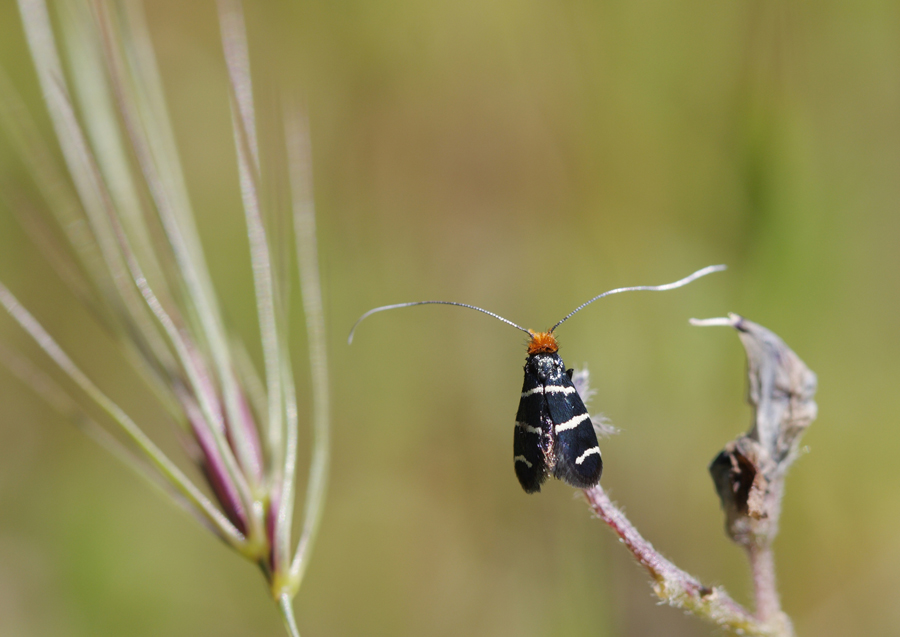
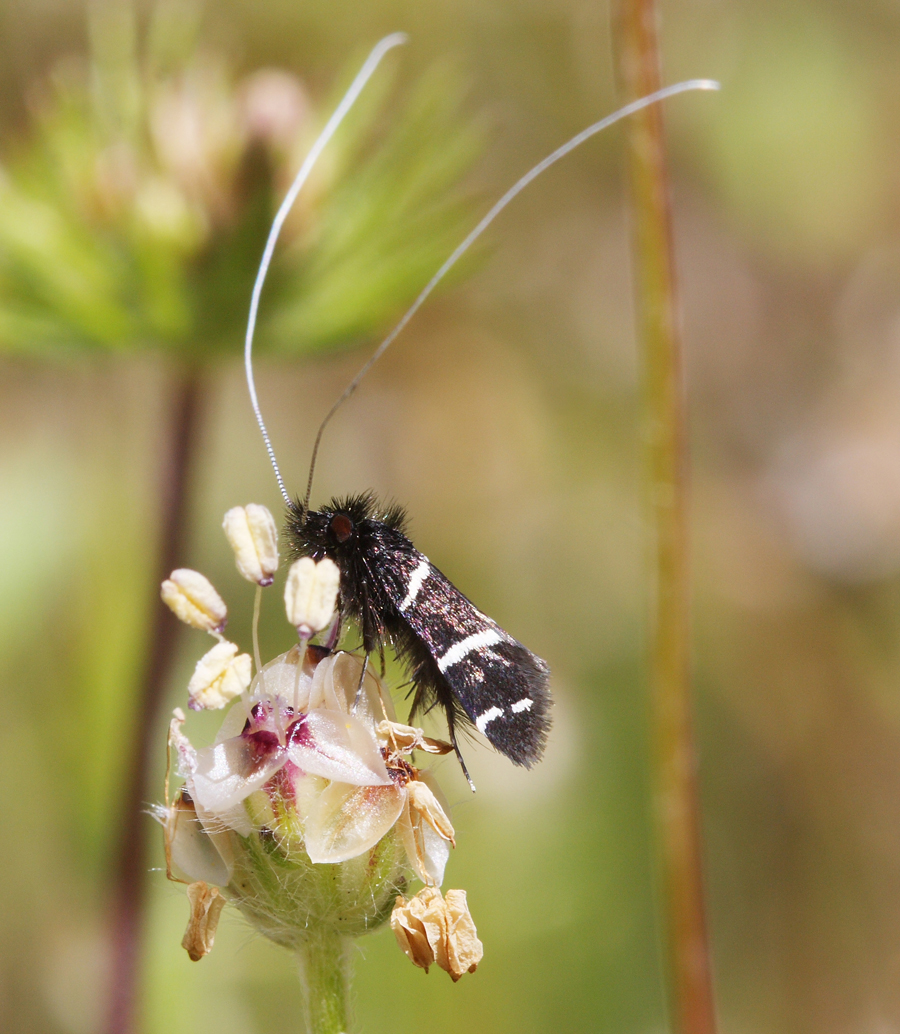

Must be at least three species – what about the one with the orange head? The markings are like those in photos 1 și 4, but the antennae don’t look as long and I’m wondering if this is sexual dichroism.
I hung out with a moth guy in my early days, who introduced me to “Incurvariidae.” They’re quite small as I recall – must be quite a challenge to mount.
Chris
Very unusual moth. To me it looks like a stag horn moth. How big is the wing span?
Yes I’m thinking 3 as well. I thought dimorphism at first too, but reading Powell it sounds like there are 2 species that are both supposed to have orange on the head to varying degrees. Ca să nu mai vorbim de, they shouldn’t overlap in range. It’s the ones without the orange that are more puzzling! I’ll just have to go over to Berkeley and have Jerry put names on them.
I kind of cheat by mounting my micros upside down – and I’m trying to illustrate exactly how I do it so I can add it to the techniques section.
And as far as micros go these guys are big! About 12mm wing tip to wing tip.
I love these little moths!…used to see them often while hiking along the coastal trails at Pt Reyes, on Calochortus tolmei.
Not which species though, perhaps you can put a name to it?
http://bobabela.com/California-Nature/Insects-Spiders/7263324_oXTZd#466874794_R7RiX
Updated, looks like they are all the same. Bob – your moth would also be A. trigrapha.
Ah, so two species rather than three – the post apical band can be complete or broken, but what about the orange head?
Multumesc Chris.
It’s still confusing. Males have the orange, which varies considerably. There is still a chance some of these are Adela eldorata, which more commonly has a bright orange crown. I’ll still have Powell sort these specimens out and tell me the verdict.
All the monograph says in regards to the red on A. trigrapha is “… and a few to several orange scales at the back of the crown.” No note on dimorphism.
[…] Grinter, at The Skeptical Moth, goes moth tasting in the Napa Valley and photographically samples some intoxicating vintages of Adelidae fairy […]
[…] Adela trigrapha (Moth Tasting in Napa) […]
[…] since I saw Chris Grinter’s beautiful photographs, I have wanted to see (and possibly photograph) the tiny little moths known as fairy moths (family […]